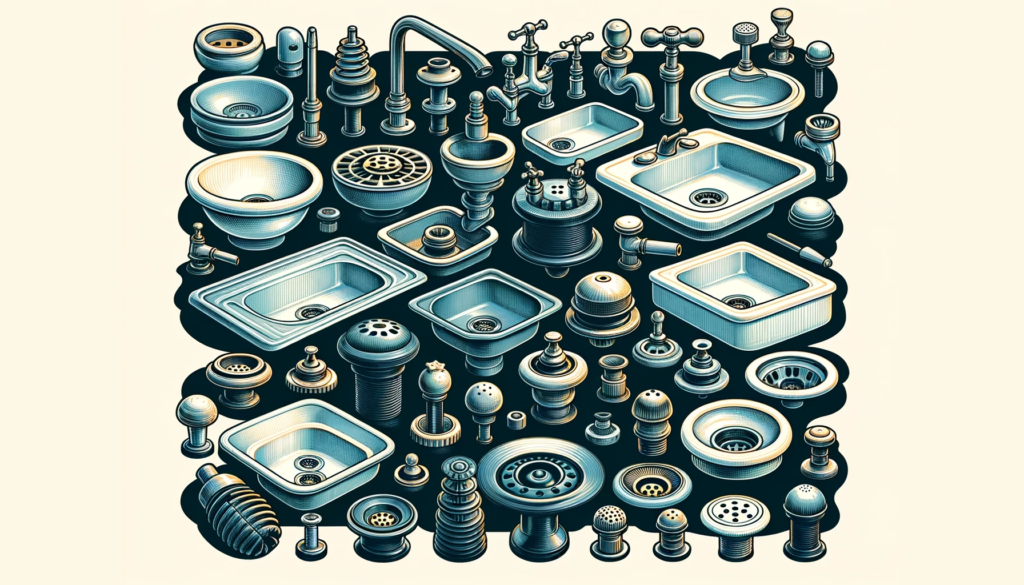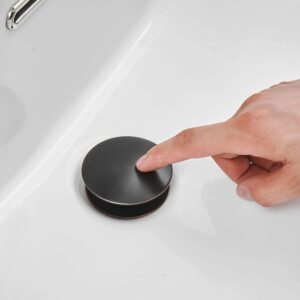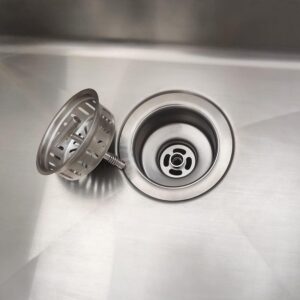The Ultimate Guide to Sink Stoppers: Everything You Need to Know

How to Choose and Maintain the Perfect Sink Stopper
When it comes to sink stoppers, understanding the different types available is crucial in making an informed choice. In this section, we will explore the various types of sink stoppers, including pop-up sink stoppers and basket strainer sink stoppers. Additionally, we will discuss the factors you should consider when selecting a sink stopper, such as compatibility with your sink type and existing plumbing, as well as material durability. Lastly, we will provide you with proper maintenance and cleaning techniques to ensure optimal performance and longevity of your chosen sink stopper. Let’s dive in!
Types of Sink Stoppers
When it comes to sink stoppers, there are different types available, each with its own functionality and design. Let’s explore two popular types: pop-up sink stoppers and basket strainer sink stoppers.
1. Pop-Up Sink Stoppers

Description
Pop-up sink stoppers are commonly found in bathroom sinks. They feature a lever or knob on the faucet that controls the movement of the stopper. When you push the lever down, the stopper seals the drain, preventing water from flowing out. To open the drain, simply pull up on the lever, and the stopper will pop up, allowing water to flow freely.
Advantages and Disadvantages
Advantages of pop-up sink stoppers include their ease of use and convenience. They provide a seamless look to your sink since they are integrated into the faucet itself. However, one disadvantage is that they can be prone to clogs due to their complex mechanism.
2. Basket Strainer Sink Stoppers

Description
Basket strainer sink stoppers are commonly used in kitchen sinks. They consist of a perforated metal basket that sits inside the drain opening. The basket catches food particles and debris while allowing water to pass through.
Advantages and Disadvantages
The functionality of basket strainer sink stoppers makes them ideal for preventing clogs in kitchen sinks caused by food waste. They are easy to install and remove for cleaning purposes. However, one drawback is that they may not provide a completely watertight seal like pop-up sink stoppers do.
Key Takeaways: Understanding the different types of sink stoppers allows you to choose one that best suits your needs and preferences for your specific sink type and usage requirements.
Factors to Consider When Selecting a Sink Stopper
Choosing the right sink stopper involves considering various factors to ensure compatibility and durability. Let’s explore two important factors: sink type and compatibility, as well as material and durability.
1. Sink Type and Compatibility
Different sink types require specific types of sink stoppers. For example, bathroom sinks typically use pop-up sink stoppers, while kitchen sinks often utilize basket strainer sink stoppers. It’s essential to match the sink stopper to your specific sink type to ensure proper functionality and a seamless fit.
Additionally, consider the compatibility of the sink stopper with your existing plumbing. Some sinks may have unique drain configurations that require specific types of stoppers. Ensure that the chosen sink stopper is compatible with your plumbing setup to avoid any installation issues or leaks.
2. Material and Durability
Sink stoppers are available in various materials, including stainless steel, brass, plastic, and rubber. Each material has its own advantages and considerations. Stainless steel and brass are durable options that offer longevity and resistance to corrosion. Plastic is lightweight and affordable but may not be as durable in the long run. Rubber provides flexibility but may wear out over time.
Evaluate the durability and longevity of the chosen material based on your usage requirements. Consider factors such as water quality, frequency of use, and potential exposure to harsh chemicals or cleaning agents.
Key Takeaways: You should consider these factors when selecting a sink stopper, so you can ensure a proper fit for your sink type while choosing a durable option that will withstand regular use for years to come.
Maintaining and Cleaning Your Sink Stopper
Proper maintenance and regular cleaning of your sink stopper are essential to ensure optimal performance and prevent clogs. Let’s explore some simple steps for cleaning your sink stopper and troubleshooting common issues.
1. Regular Cleaning Practices
To keep your sink stopper clean, start by removing it from the drain. Rinse off any debris or food particles that may have accumulated on the surface. Use a mild dish soap or a natural cleaner to scrub away any residue. Avoid using harsh chemicals as they can damage the material of the stopper.
For a deeper clean, you can soak the sink stopper in a mixture of warm water and vinegar or baking soda. This will help remove any stubborn stains or odors. After soaking, rinse the stopper thoroughly and dry it before reattaching it to the drain.
2. Troubleshooting and Maintenance Tips
If you encounter issues with your sink stopper, such as slow drainage or leaks, there are a few troubleshooting steps you can take. First, check for any debris or hair that may be trapped around the stopper mechanism. Remove any obstructions to restore proper functionality.
For pop-up sink stoppers, ensure that the lever or knob is securely attached and properly aligned with the internal mechanism. If necessary, adjust or tighten any loose connections.
To prevent clogs, avoid pouring grease or large food particles down the drain. Consider using a drain strainer in conjunction with your sink stopper to catch debris before it enters the plumbing system.
Regularly inspect your sink stopper for signs of wear or damage. Replace worn-out rubber seals or corroded parts promptly to maintain optimal performance.
Key Takeaways: By following these maintenance practices and troubleshooting tips, you can keep your sink stopper clean, functional, and free from clogs for years to come.
Wrapping Up
Understanding the different types of sink stoppers and considering factors like sink type, compatibility, material, and durability are key to selecting the perfect one for your needs. Whether you opt for a pop-up sink stopper or a basket strainer sink stopper, regular maintenance and cleaning are essential for optimal performance and longevity. By following the simple cleaning practices outlined in this guide and addressing any troubleshooting issues promptly, you can ensure that your sink stopper remains functional and free from clogs. Remember to choose a sink stopper that suits your specific requirements and enjoy hassle-free drainage in your kitchen or bathroom sink for years to come.




